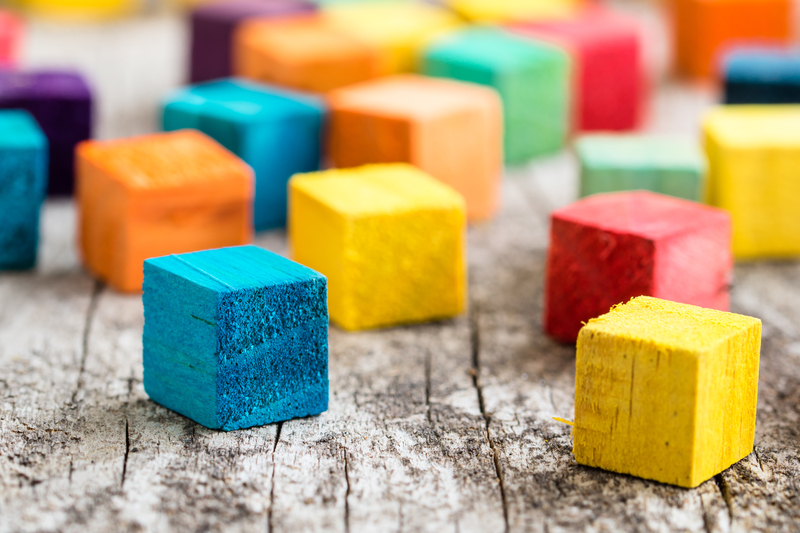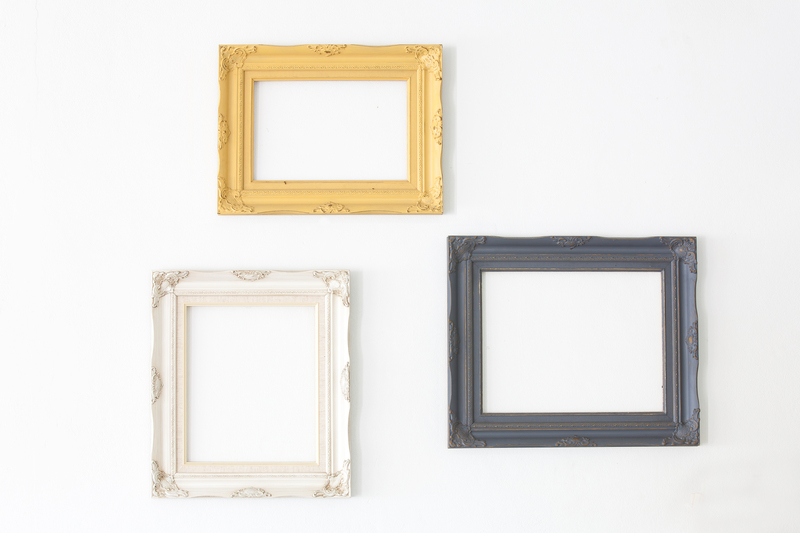From Tossed to Transformed: Recycling Your Cookware
Ever wondered what to do with those old pots, pans, and baking sheets lurking in your kitchen cabinets? Instead of sending them to the landfill, there are numerous ways to give your cookware new life. From environmentally conscious recycling methods to imaginative upcycling projects, this comprehensive guide will walk you through everything you need to know about recycling cookware and transforming the old into something extraordinary.
Why Should You Recycle Your Cookware?
Every year, millions of tons of metal, glass, and ceramic cookware are thrown away, taking up precious space in landfills and contributing to environmental pollution. Recycling your cookware not only conserves resources but also reduces greenhouse gas emissions, conserves energy, and supports a circular economy. Let's explore why keeping cookware out of landfills matters:
- Reduces Waste: Diverts non-biodegradable materials from landfills.
- Conserves Resources: Saves raw materials and reduces mining or manufacturing needs.
- Lowers Environmental Impact: Decreases pollution and greenhouse gases associated with new product manufacturing.
- Supports Sustainable Living: Promotes a culture of reusing and repurposing items.
Before you toss your old pots and pans, consider the significant benefits of responsible disposal!

Can You Recycle All Types of Cookware?
Cookware comes in many forms, including nonstick, stainless steel, cast iron, aluminum, glass, and ceramic. The process for recycling cookware depends on its material and condition:
Stainless Steel and Aluminum Cookware
Most metal cookware can be recycled. Both stainless steel and aluminum are highly recyclable materials. Many curbside recycling programs accept them, but check with your local facility, as some require you to drop off large items at a scrap metal center. Even damaged or worn pans are accepted, as they'll be melted down and repurposed.
Nonstick and Teflon-Coated Pans
Nonstick cookware presents challenges, as the Teflon (PTFE) coating is difficult to process. Some recycling centers will not accept nonstick pans unless the coating is fully removed. Research local scrap yards or specialized recycling programs to see what's available in your area.
Copper Cookware
Copper is valuable and in demand at scrap yards. Recycling copper cookware is straightforward if you can separate it from other materials. Clean off any wood, plastic, or steel handles before taking it in for recycling.
Cast Iron
Heavy and nearly indestructible, cast iron is recyclable! It can be dropped off at most scrap metal recyclers, and if in good condition, may be eagerly accepted by secondhand or thrift stores.
Glass and Ceramic Dishes
Unfortunately, glass and ceramic cookware often can't be recycled in your curbside bin due to their composition, which differs from bottles and jars. Instead, consider donating or upcycling these pieces.
Cookware With Mixed Materials
If your cookware features plastic handles, wooden parts, or multi-layer designs, you may need to disassemble it before recycling. Only the pure metal components will be accepted at most facilities.
How to Prepare Cookware for Recycling
To ensure your cookware is accepted and properly recycled, follow these steps:
- Clean the items--Remove food residues and wash thoroughly.
- Remove non-metal pieces--Detach plastic, wood, or silicone handles, lids, or knobs.
- Sort by material--Keep aluminum, stainless steel, cast iron, and copper separate.
- Check local recycling rules--Some centers accept only certain metal types.
Where to Recycle Old Cookware
Finding the right destination is crucial for responsible cookware recycling. Here are your top options for disposing of old cookware sustainably:
1. Local Recycling Programs
Contact your city's recycling center or waste management facility to verify whether they accept cookware. Some accept small metal items in the curbside bin, while others require drop-off at a designated facility.
2. Scrap Metal Yards
Scrap yards pay for clean scrap metal, including many pots, pans, and even kettles. Be sure to remove all non-metal parts and check for minimum weight requirements.
3. Retailer Take-Back Programs
Some major brands and retailers offer cookware trade-in programs or recycling initiatives. For example, World Kitchen, Sur La Table, and household goods stores occasionally run events or have drop-off bins. Check their websites or ask in-store about current programs.
4. Manufacturer Mail-Backs
A few cookware brands provide mail-in recycling. Reach out to the manufacturer for guidance--especially for nonstick or specialty items like pressure cooker lids and handles.
5. Community Centers and Collection Events
Nonprofits, environmental groups, or municipal events sometimes collect metal goods for recycling drives. These are great opportunities to recycle odd-sized, heavy, or hard-to-process materials.
Donation and Reuse: Giving Cookware a Second Life
Not all worn cookware belongs in the recycling bin. If your pots, pans, or kitchenware are still usable--or can be repaired--they could find a new home. Consider these options for responsible cookware disposal:
- Donate to thrift stores or nonprofit kitchens, like shelters and food banks.
- Offer items on neighborhood apps such as Freecycle, Facebook Marketplace, or Nextdoor.
- Repair or re-season cookware (especially cast iron)--it could last decades more with a little TLC.
- Swap with friends or family who may be setting up new homes or kitchens.
Giving cookware a second chance helps reduce demand for new products and extends the life of valuable materials!
Creative Upcycling: Transform Old Cookware Into Something New
Looking for a project? Many pots and pans can be repurposed with a little creativity. Here are some of the most imaginative upcycled cookware ideas to inspire you:
- Planters and Garden Beds: Turn large pots into outdoor flower planters, herb gardens, or quirky succulent pots.
- Wall Art and Clocks: Attach clock mechanisms to old frying pans or hang them as eclectic wall decor.
- Bird Feeders: Hang colanders or shallow pans outside with seed for a whimsical bird feeder.
- Light Fixtures: DIY lampshades or pendant lights from stainless bowls or whisks.
- Storage Containers: Use cleaned cookware for organizing kitchen tools, craft supplies, or office gear.
- Chalkboard Trays: Paint a baking sheet with chalkboard paint for a family message board.
- Children's Toys: Old muffin tins make perfect organizers for small toys or craft stations.
The possibilities are only limited by your imagination! Upcycling not only breathes new life into unwanted items but also gives your home a unique, personalized touch.
Common Questions About Cookware Recycling
What Should I Do With Broken or Severely Damaged Cookware?
If your cookware is too damaged for donation or reuse, seek out a scrap metal recycling facility. Even rusty, dented, or warped metal cookware is valuable at these facilities, so don't hesitate to bring it in.
Can I Recycle Nonstick or Teflon Cookware?
Because of the nonstick coating, not all centers accept these pans. Some will if you remove the coating; others may direct you to specialized programs. Check with manufacturers or local resources to avoid contaminating other recyclables.
Why Can't I Put Glass or Ceramic Bakeware in Curbside Recycling?
Bakeware is made from a different type of glass or ceramic than jars and bottles, and its high melting point can disrupt commercial recycling processes. If undamaged, reuse or donation are your best options.
Is It Worth Recycling Cookware for Money?
While you won't get rich from recycling old pots and pans, scrap yards may pay small amounts for aluminum, steel, or copper cookware. Heavier items like cast iron or large copper pots are generally most valuable.
The Environmental Impact of Recycling Cookware
It's easy to overlook the footprint of everyday kitchen items, but recycling cookware can have a surprising positive impact:
- Reduces extraction of new resources.
- Saves significant energy compared to producing metals from virgin ores.
- Diverts tons of waste from landfills annually.
- Cuts carbon emissions and pollution.
By ensuring your cookware is reused, recycled, or upcycled, you're not only helping the planet--you're building a more sustainable kitchen and community!

Tips for Sustainable Cookware Choices
Prevent future waste with these sustainable cookware buying strategies:
- Choose durable materials like stainless steel or cast iron for longevity.
- Avoid cookware with non-recyclable coatings unless it's certified and supported by a manufacturer take-back program.
- Opt for modular designs with replaceable parts to extend lifespan.
- Research brands with recycling initiatives or eco-friendly product lines.
Conclusion: From Tossed to Transformed
Old cookware doesn't have to end up in the trash! Whether it's a battered saucepan, a scratched baking sheet, or an unused Dutch oven, there's a sustainable option for every unwanted item. Recycling, donating, or upcycling your cookware benefits the environment, your community, and even your wallet.
If you're looking to get rid of old cookware responsibly, start by contacting your local recycling centers, investigating community reuse opportunities, or letting your creativity flow with an upcycling project. And as you consider future purchases, choose sustainable cookware that's built to last and can be recycled at the end of its long life.
Remember: Every pan recycled is a small victory for the planet. Let's turn tossed kitchenware into something to be proud of!